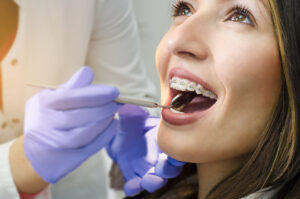The Health Benefits of Orthodontics
There was a time when orthodontics was considered primarily a cosmetic practice. But as biologists, scientists, and medical professionals have continued to study human development and evolution as it relates to teeth and jaw development, some additional health benefits have come to light.
Smile
Some might argue that a straight smile is purely cosmetic, and to some degree, they would be correct. However, given the new focus on mental health, there is something to be said for the value of a smile. It gives the “wearer” confidence to flash those pearly whites. In turn, the smile shows the recipient a bit of background on the individual smiling at them. For example, bad teeth can indicate anything from malnourishment to drug addiction. A healthy smile is an indicator of overall health.
Bite
How the teeth from the mandibular jaw come together with the teeth from the maxillary jaw constitutes an individual’s bite. When the top jaw (maxillary) protrudes over the bottom jaw (mandibular) so that the incisors don’t meet properly, it’s called an overbite. When the mandibular jaw extends beyond the maxillary jaw so that the bottom incisors are farther forward than the top incisors, it’s called an underbite. In both situations, the bite affects the shape of the face and the usefulness of the incisors. Orthodontics corrects the bite so patients have fewer jaw problems and so they can bite into an apple or a sandwich with a cutting motion, as intended, rather than a gnawing motion.
Chew
Similarly, the way the teeth meet when a person takes a bite impacts how they chew. If there is a malocclusion (the patient’s top and bottom teeth don’t come together properly), it can lead to sores in the mouth. These sores are typically the result of unintentionally biting the tongue or the inside of the cheek. Additionally, malocclusions cause uneven and unnecessary wear on certain teeth over time. Orthodontics help prevent the sores as well as the added wear.
Speech
How teeth are positioned impact how the tongue lies within the mouth. To a greater extent, the way the tongue interacts with the teeth is an integral aspect of proper speech. In other words, if the tongue isn’t able to move in the way necessary to make a certain sound, a speech problem develops. This occurrence is most recognizable in patients with gaps between their front teeth who lisp. It’s not limited to that, though. Orthodontics correct the position of the teeth so that the tongue can do its job and the patient can learn to speak properly.
Sleep
Our jaw bones grow and change throughout our lives. In fact, jaw bones have changed throughout the course of human history. Anthropologists have discovered that human jaws are smaller now than they were in earlier parts of human history. Most attribute the change to industrialization and the fact that humans shifted from hunter-gatherer lifestyles to becoming more agrarian. Regardless of whether these changes are genetic or environmental (there are arguments on both sides), these smaller jaws contribute to increased crowding of the anterior (front) teeth. Not only that, but some scientists argue that the narrower jaws are also causing an increase in obstructive sleep apnea and upper airway resistance syndrome. Both conditions cause sleep disturbances that make those who suffer from the diagnoses more likely to develop other, more serious conditions, like cardiovascular disease, diabetes, or anxiety.
Simply stated, narrower jaw bones don’t provide enough room for the tongue to rest comfortably, often creating breathing problems like apnea and snoring during sleep. When orthodontics corrects the jaw, making room for the tongue at rest, the treatment also addresses the sleep disorder as well. There is nothing cosmetic about that!
As you can see, orthodontics serves patients well beyond the appearance of a great smile. There are multiple medical benefits to proper teeth alignment.
visit the homepage for more latest articles









